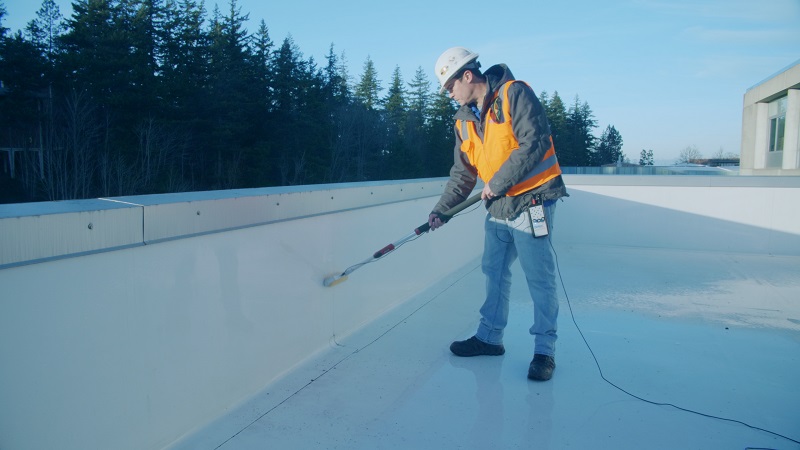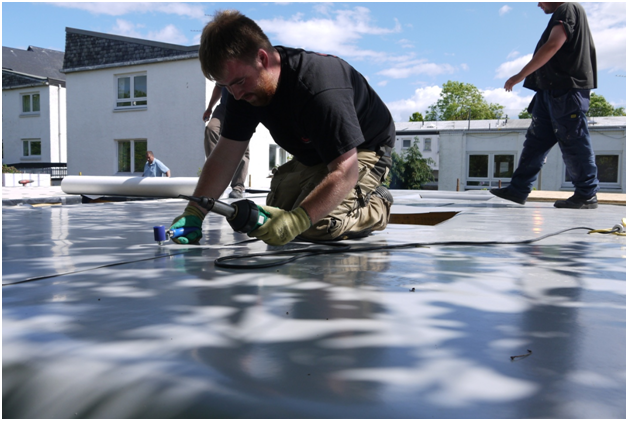Integrity testing is the ‘sacred chalice’ of building envelope work. To have an affirmation that the bits of a building that are relied upon to get wet because of climate is in a condition to forestall water transmission to the inside is the objective of each temporary worker, and additionally every proprietor. Subsequently, a whole industry, that of testing research facilities, has been made.
Verifiably there have been five generally utilized testing strategies for testing of level membranes: spray testing, surge testing, capacitance (impedance) testing, atomic metering, and infrared (IR) warm imaging. Inside the most recent two decades, two new techniques for testing have upset the break location and integrity testing industry. These strategies use electricity and a straightforward electric circuit to distinguish and recognize issue conditions in roofing and water-proofing maintenance frameworks. These are blandly alluded to as ‘Low Voltage Electrical Conductance Testing’ and ‘High Voltage Spark Testing’.

To clarify or address every one of the standards and nuances of how each testing strategy ought to be done to give precise outcomes would require additional time and space than permitted. This report will center around highlighting the testing strategies, logical standards, and their points of interest and impediments. Extraordinary consideration will be given to impediments. This is expected in huge part to the way that it has gone to the consideration of the creator that the capacities of the high and low voltage strategies are as often as possible exaggerated bringing about unmet desires with respect to proprietors and temporary workers which prompt doubt and conceivably an awful notoriety of a developing innovation.
Likewise, with most investigative devices, the test technique chose is just on a par with the experience of the individual user to perform the test. Information of all the test strategy choices is just the initial step. Knowing the advantages and all the more essentially the constraints of every framework will help an educated individual to rapidly and cost adequately find and repair all ruptures inside the film.
LOW VOLTAGE TESTING
Low voltage testing is a conclusive test in that once false positives are prohibited the testing gives authoritative areas of breaks in the film tried. The gear demonstrates where momentum is completing water the layer to the substrate underneath.
Low voltage is a practical testing alternative when a non-conductive film is introduced over a conductive deck get together. This setup yields a straightforward electrical circuit whereby the layer is an electrical isolator and any rupture in the film shuts the circuit way and enables current to stream.
More up to date low voltage test hardware accessible does not require a different circle and testing test. A testing design like that portrayed above just in smaller than expected is made by an examining platform that is roughly 18″ x 24″. This platform contains a bordered circle produced using metallic chains swinging from the edges of a filtering platform and an extra line of chains in the middle which are both associated with the power source. Meters are connected to the two chains and when a rupture is inside the points of confinement of the platform there is a potential distinction between the two chains that make a present stream which enacts a capable of being heard the tone to alarm the test professional.
Similarly, as with all testing strategies, there are impediments. The most vital piece of this and any testing convention is the test professional. The quantity of years of experience does not ensure a qualified specialist and unfortunately, there are no courses or accreditations for this sort of testing. The test gear is ‘moronic’, giving the professional capable of being heard tones and numerical or measure readings. It is the activity of the professional to decode these readings and act appropriately.
HIGH VOLTAGE TESTING
The high voltage testing uses a charged metal floor brush over the layer as opposed to an electrical plate of water to make the electrical potential distinction. (See Photos 4 and 5) The power source is again grounded to the conductive deck and makes a high potential distinction with an amazing little present. At the point when the metallic floor brush head is cleared over a rupture in the electrically insulative film surface, the circuit is finished enabling current to stream.
The absence of water, and in addition the relative speed and straightforwardness of high voltage testing makes it desirable over low voltage in many conditions. At the point when temperatures are high, keeping the layer wet for the low voltage testing is frequently inconceivable. At the point when temperatures are low, working with water can be risky, or here and there outlandish. High voltage testing will distinguish the exact area of breaks in the film and, in light of the fact that no water is utilized, permits their quick repair and retesting.
A one of a kind favorable position of this test method is that for fluid connected membranes, it can distinguish areas where film thickness does not meet least prerequisites. On the off chance that the electrical protecting properties of the film (i.e. dielectric steady) are known, the gear can be set to the best possible voltage where current will course through the layer and actuate the capable of being heard alert unless a foreordained least thickness of the material is available.
Once more, the test strategy has restrictions. Being a moderately new innovation, a similar alert about qualified testing professionals applies. Different confinements include:
A film must be dry, conceivably deferring testing a couple of hours if dew happened the night earlier. A film must be uncovered (can’t test through overburden). Because of the higher voltage, all the more ?false positives? are conceivable, making the test professionals ability essential. It is conceivable to consume a thin fluid connected film if the test voltage is set too high.
Electrically conductive membranes, for example, dark EPDM and thwart confronted adjusted bitumen membranes can’t be tried.

